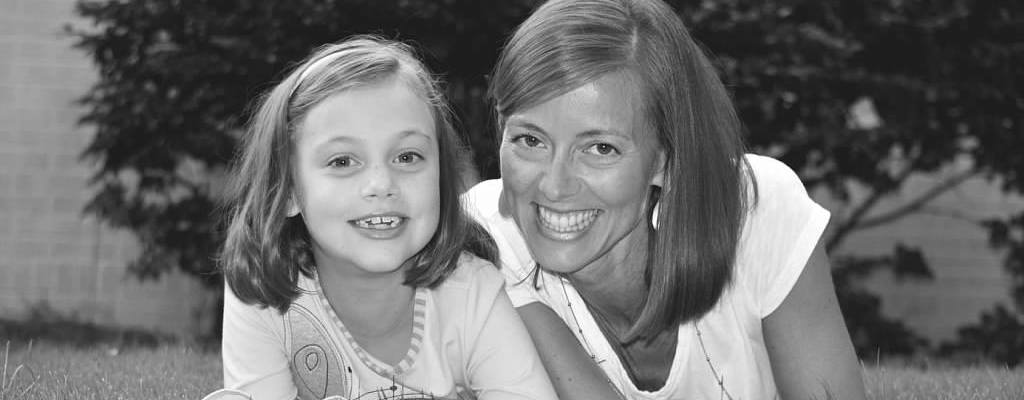Because of Lucy
It was the calm between storms.
Storms of heaving and screaming and crouching limply over a trash can. I was unsure how much time we had before the pain seized her again. She folded herself up next to me as I began to softly hum a familiar song. Gently I trailed my fingers up her arm.
When you are sick, sound and touch can either be a comfort or a complete aggravation, so I tread lightly, reading her response to me. She didn’t shake me off. She didn’t shush me. And so, I continued. As my fingers reached the edge of her t-shirt sleeve I felt the small rectangle I would need to detour around to reach her shoulder. There, stuck to the back of her arm, was the pod of insulin she wears—a reminder that whatever sickness she was battling at the moment, the silent, chronic one was still waging its war too—complicating further an already complicated situation. If she continued on this path of being unable to keep any food or liquid down, her blood sugar would slip lower and eventually she would need an injection of glucose from a needle or an IV.
When you have type 1 diabetes being sick isn’t just being sick. Eating a meal isn’t just eating a meal. Enduring stress isn’t just enduring stress. Exercising isn’t just exercising. Everything affects your blood sugar and your blood sugar affects everything—physically, mentally, emotionally.
I feel like I’m going to die, Mommy.
I’m so sorry, baby. We are going to get through this. We are going to make sure you get well.
But, of course, we know that getting well for Lucy doesn’t mean getting completely well.
In the beginning I carried a tremendous amount of grief about that. If I’m honest, I carried some resentment too—that my child has to live her entire life under the thumb of a disease holding her down and wearing her out.
But then I watched Lucy live with type 1 diabetes (T1D).
For five years, half of her life, I have watched her.
I have seen her make the softball all-star team and earn her place on first base.
I have listened to her belt out power ballads as her voice teacher shakes her head, smiles and says—Lucy, you sure don’t pick the easy songs, do you?
I have watched her, in the middle of a family vacation, remove a dangling continuous glucose monitor (CGM) from her hip as she shrugs with a smile and says—It’s okay. I can just check my blood sugar the old way for the rest of the day, and then dash back off to the lazy river.
I have watched her fill her little backpack with snacks and supplies and tiny stuffed animal friends as she heads out into the woods behind our house for another adventure with her little brother.
Occasionally, the grief grabs hold of me. From time to time, the resentment rears its head. But, on most days, I stand amazed by a child who lives a full-color life despite the dark cloud of this disease.
My faith in God and undying commitment to hope compels me to see the struggles of this world as so much more than struggles. In theory I have long believed that a pain-free, easy life would rob us of deeper and more eternal things. Because of Lucy, I have moved from a theoretical understanding of strength in suffering to something real and true I see lived out every day.
Because of Lucy, when my fingers trace the edge of that pod on her arm I move quickly from grief to gratitude.
Because of Lucy, I fight and pray for a cure; but I do it in love, not anger.
Because of Lucy, I see our journey with type 1 as an opportunity, not an obstacle.
Because of Lucy, I watch glorious light pour from the cracks of brokenness.
Because of Lucy, I have learned that getting well isn’t the goal—getting on with our best life is.
Once the stomach pain and nausea had subsided Lucy looked at me and asked, Was that a dream?
More like a nightmare, I joked.
But then I reconsidered. A nightmare is all darkness and fear. Dreams, on the other hand, carry hope. We do too.
“When we learn to move through suffering, rather than avoid it,
then we greet it differently. We become willing to let it teach us.
We even begin to see how God can use it for some larger end.”
-Henri Nouwen
Some things we remember in order to hold onto hope in the midst of despair.
- What if this obstacle is really an opportunity?
- There is strength on the other side of suffering.
- It’s okay to cry sometimes.
“…weeping drives you into joy, it enhances joy, and then the joy enables you to actually feel your grief without it sinking you. In other words, you are finally emotionally healthy.”
-Tim Keller
Read Type Onderland by Elizabeth Maxon.





